Tasmania Circumnavigation
Banyandah sits just outside Hells Gate in Pilot Bay with the gentle rocking like a mother putting her baby to sleep, while in the cockpit, our chart plotter displays a bright red line encircling the Isle of Tasmania, recording 900 nautical miles completed in three months shy three days, living life afloat in all kinds of weather, scenery, adventures, trials and rewards. Hip hip hooray, we’re back, and we’re safe with many a book filled with memories enough for a lifetime.
This is an island of feast or famine for wind sailors, but we did alright, logging 600 miles by pure sail power. Of the remaining third, a lot was sail assisted. Summing up; Achievements make good memories. Make them happen. Work hard, manage your money and manage your marriage by letting the little stuff sail right over your head, and importantly, manage your health. No shortcuts.
Our Plan
From long before leaving Strahan, we had a plan for our summer that contained several goals. Firstly we needed to try our wings to see if we could still fly across the never-never as we have for so long, mastering our magic carpet with confidence, without mishap or injury. Next was to refit our aging ship that has suffered a bit of neglect after sailing many miles and then being rather static during years in the safe haven of Macquarie Harbour. A haul-out was desirable to anti-foul her bottom, change anodes, and to check that all underwater gear was in good nick. As well, if we could manage it, we wanted to paint her topsides, the epoxy blue we’d coated her with seven years earlier had faded and worn thin like an old person’s skin. We also wanted to attend the Hobart Wooden Boat festival, so we put together a master plan that saw Banyandah safely out of harm’s way on hard-stand while we traipsed off to visit friends and tour the magnificent tall ships.
Outside of the dreadful forest fires that smothered the Apple Isle in acrid smoke, all went perfectly to plan. The crew at the marina looked after us with humour and speed, and Jack and Jude managed the tricky and dangerous job of painting a large vessel’s topsides, working on a platform several metres above hard concrete. Over the two weeks that we lived high in the sky, we figure we must have climbed up and down ladders a hundred thousand times – or something close to that! Thankfully we never had a slip, watching our every step. Which is mandatory, like so many other routines encountered when living life afloat.
Indomitable Spirit
Another bolt out of the blue
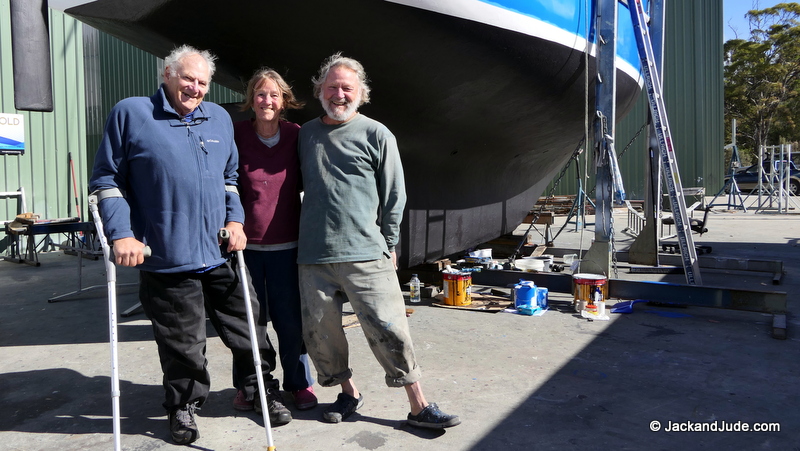 Roger Wooller, now 75 years, was born in Kenya and contracted polio at aged two while living with his parents at Lake Victoria. From that young age, without the use of his legs, he remembers being carried about on the shoulders of native servants.
Roger Wooller, now 75 years, was born in Kenya and contracted polio at aged two while living with his parents at Lake Victoria. From that young age, without the use of his legs, he remembers being carried about on the shoulders of native servants.
Roger’s married to Jan, and together they have two children; Ben and Renee.
Our first encounter with Roger came about in 1978 in Rabaul, Papua New Guinea when he was our neighbour on a sailboat anchored close enough for us to see him hauling himself about the vessel using only the strength in his shoulders and hands. To say we were amazed would belittle how astounded we were to see a man without the use of legs, with a toddler, manage a ship while we were having a fair bit of difficulty doing the same with full capable bodies. Like Tarzan, he’d fly from rigging to railing to handholds as fast, if not faster, than we could. Then gobsmacked we’d watch Roger sit himself in the anchor well to bodily pull his ship up to the anchor, hand over hand, then stow the great beast, before swinging aft to conn his ship out the harbour.
Years went by and we lost contact with Roger and Jan, until by chance, after enrolling our two sons in the Queensland Correspondence School for their high school years, a note came along from the school asking us if we remembered meeting the young Wooller family many years earlier, because Roger was one of our boys’ tutors. Amazing, hey!
The life of a traveller is such that we never had an opportunity to meet them again, except through Roger correcting our son’s school lessons. Then, after we’d completed our world circumnavigation and their terms had finished, our lives moved at a rapid pace and we lost all contact. And that’s how it’s been until just the other day when a camper-van pulled up near Banyandah, standing high and dry on hard stand, midway through a major refit.
Busily getting ready to apply our first coat of topside paint, we paid little attention to the man behind the wheel of a rented camper van pulled up behind our vessel, until he called out to Judith to ask if we’d ever been to India, or some such place that we’d never been. Shaking her head, from behind the wheel the man said, “I once knew a boat named Banyandah. Can’t recall exactly where?”
Jude walked over to the driver’s window and while I casually watched as I readied the brushes and paint pots, she leaned through the window to give the man a kiss fair on his cheek.
You could have knocked us both over with a feather when we discovered that it was Roger from 1978. Polio stricken Roger who had so impressed us with his steel nerves and gritty determination raising a one-year-old son on a small sailboat called Thurloo.
Naturally, our paint job had to wait while Roger laboriously extracted himself from the van with the aid of crutches and steel leg braces, and then over a cuppa we heard his most extraordinary story. In those days, it was tough even for able bodied folk to sail a boat with kids on board, so to hear that Roger and Jan with Ben had sailed Thurloo around the Pacific before Roger took a desk job to fund their growing family, impressed us greatly knowing how demanding it was to raise a family afloat. Then Roger disclosed that after tutoring our sons on their sail around the world, he and Jan got the hankering to do the same, so the family of four bought a boat called Hagar the Horrible, an Adams 40, which Roger told us was a dream to sail. All aboard! The four of them then took off around the world with Roger in his forties, still lacking the use of his legs.
Wow! Doesn’t Roger illustrate what a determined person can do. Over dinner that night at the local pub, while each of us exchanged story after story, we saw what this man has achieved and we continually encouraged him to write a book on his experiences. But Roger’s rather modest. Unbelievable we think, and you might agree. So if you’d like to read his story, send us a note, and we’ll pass it on to inspire and motivate this fine gentleman. Jack and Jude believe the world needs to hear of such a man as he, and we think you’ll agree.
Sailing Icon from distant past
We’ve all heard of the sailing icons Lin and Larry Pardey. Well, Lin was a guest speaker at this year’s wooden boat festival, and came in contact with us when she wanted our Tasmanian Cruising Guide which she’d heard was the best. Of the many things we wanted to do at the festival, meeting Lin seemed a good idea, so we tracked her down at a guest speaker’s get-together late Saturday arvo. Geez, these media functions are so crowded, especially when free beer and drinks are on offer, and here I should say, my hearing is not so good in noisy crowded rooms. I’m guessing, too much industrial noise and deep diving when a youngster has sort of made me profoundly deaf in the high range. Anyways, we track this mighty midget down amongst the shoulder-to-shoulder beer-swilling crowd, and of course she was mobbed, so we hung back for our moment to greet her. As she started to walk away, I tapped her shoulder and mentioned who we were and that she was using our guide. Somehow, in our first few words, America came up, maybe because I was born there, and so had she, and that both of us had relocated to finer places. Frankly, neither Jude nor I have read her books or seen any of their films. Maybe if we had, we’d have been more informed, but out of curiosity I asked where she’d grown up and was surprised to hear her mention Malibu Beach thinking that wasn’t all that far from where I grew up. In mentioning that, she said that her teenage years had actually been spent in the valley, the San Fernando Valley.
Have you ever had one of those moments that cause the short hairs at the base of the head to stiffen and rise up. That’s what happened when I asked her where in the valley? Amongst all the noise, I heard a word I’ll never-ever forget because it’s a word my teacher’s had pounded into our dull pupils’ heads. The name I heard is a small town near Tarzana called Pacoima, a place named by the Tataviam Indians more than 1500 years ago. I remember it because my teachers had us recite, “People Always Carry Old Inky Meat Around,” over and over in ridiculous singsong lyrics to teach us how to spell our school’s name. Pacoima.
Now, Pacoima is just not an ordinary school. It’s famous because of a rather tragic event, an event that happened in 1957 when I was just entering puberty at 13 years old. At that impressionable age, a four engine aircraft crashed into our school killing not only all the crew but also a few of the students, and I was there. So, with a rising flush I asked, “Do you know of the plane crash?” And she replied so quietly in the chaotic noise that I had to lean close to hear her say, “I was there.”
With an incredulous look of disbelief, I announced, “So was I! On the playing field when the plane crashed. I lost my best friend that day.”
It beggars belief; two people sharing such a tragic event as youngsters, going on to become world sailors logging collectively several hundred thousand miles under sail. As startling, in the next moment, I learnt that Lin Pardey, nee Mary Lin Zatkin, had not only attended my Junior High school, we graduated in the same year!
Those with hearing problems will know the difficulty of conversing in a room crowded shoulder to shoulder, with small groups emphatically making points and telling stories, so, when I found myself uncomfortably close in order to hear Lin’s reply, with a shake of my head I said, “Let’s save this conversation for a quiet anchorage. After we get off the slip next week, I’ll send an email.”
South Coast
Alas, ships’ passing in the night, that quiet anchorage waits for another time, for after we were afloat we have not seen Lin since. We spent a couple of days recovering from our mammoth task, the climbing up and down ladders over so many long days, and the plain physical exertion on our aging bodies required nothing be done except read, reminisce, and drink a bit. After which, with a slick bottom and gorgeous topsides we slipped through the water so fast and pretty that in a couple more days we were lying at the bottom of Tasmania in historical Recherché Bay, where the James Craig had sat in the mud for many a decade before the might of Australia resurrected her. After a night there, a weather pattern presented the perfect opportunity to gunk hole along the south coast, something we would never let pass.
With a following southeaster, we drifted along towering cliffs while spume flew high off a powerful southern ocean, until the wide bay at Louisa Island hove into view. There, obligingly the breeze evaporated, leaving us a quiet night surrounded by magical mountains of the Iron Bound Range fronted by hugely wide sandy shores.
Yes, the ever present swell snaked into our lair to rock us asleep as we lay fore and aft, instead of our usual athwartships. A sound rest we had, waking refreshed and full of vigour that encouraged us to explore further these rarely visited islands lying off Tasmania’s south coast. But before getting underway, we had visitors.
 From around the red ochre face of Louisa, a small power cat showed its green colour before someone called out our names. Confused, we stood in wonder. Until it, coming alongside, we beamed a welcome greeting to Janet and Geoff from Melaleuca, on their way there filled with supplies. Last we’d seen of their unique craft, so well designed for her duties of transporting them and their needs quickly across these changeable seas, she was brushed aluminium. Upon glassy seas, she drifted alongside while we chatted over a morning cuppa, and then bidding them adieu, off they flew towards Southwest Cape, at such a great speed father Deny would have admired.
From around the red ochre face of Louisa, a small power cat showed its green colour before someone called out our names. Confused, we stood in wonder. Until it, coming alongside, we beamed a welcome greeting to Janet and Geoff from Melaleuca, on their way there filled with supplies. Last we’d seen of their unique craft, so well designed for her duties of transporting them and their needs quickly across these changeable seas, she was brushed aluminium. Upon glassy seas, she drifted alongside while we chatted over a morning cuppa, and then bidding them adieu, off they flew towards Southwest Cape, at such a great speed father Deny would have admired.
Our day of exploration began directly after their departure. Lying just across from Louisa Bay is the dominant green giant of De Witt, also known as Big Witch. At 367 metres, the tallest of the offshore islands, De Witt Island lies 3.7 NM (6 kms) off the south coast of Tasmania. With the day’s breeze not expected for a few hours, we motored over to investigate her intriguing northern shore with hopes of finding a future anchorage.
De Witt Island, the largest of the Maatsuyker Island Group is still as created, clothed in vivid greens of various depths that highlight ravines and creeks. At De Witt’s heart lays a slight cleft where we hoped we’d find suitable bottom, but we began our close encounter of the magical kind at her far eastern end, where an abrupt black rock face slides straight down into crystal waters that darken with great depths. With our big straight six just thumping over, its deep throaty voice echoed off this face as if the rumblings of faraway thunder, while we stood amazed at the wonders of creation. Here the mightiest seas attack, and yet delicate white and yellow flowers decorated high cracks. Further along, where the shore dips into the outlet of an occasional stream, we drifted with our sounder searching the bottom, finding it a great depth right up to the rocky shore. De Witt doesn’t make it easy to tame her. If you want to experience life in her presence, it’ll require perfect conditions with just the right ground tackle; that’s something to look forward to experiencing one day.
De Witt’s far western end, the one normally taking the full brunt of powerful Antarctic seas is craggy, razor sharp spikes, with gigantic divots exhumed long in her past. Humbled again we stood in awe, filled with images of mammoth seas blown into tiny bits of froth, and wished a spy in the sky could take that majestic spectacle to all in their living rooms. Maybe then, the masses would truly cherish Earth.
Yes, I am a religious man, but not in the biblical sense, more as a person of Earth, the land and seas. Jude and I do not want to see this wondrous creation destroyed any further for we believe the true reason for life is to experience her power and greatness, and to share that experience with young ones.
Speaking of natural power, the magic of a gentle breeze touched our cheeks just as we cleared the last vestige of De Witt, and leaving that mass to its destiny, we faced ours. Shutting down our diesel we savoured a silent passage through deep blue seas while abrupt islands towering above us slid past as we focused on the basics of life. Deep inhalations of untainted air, tasted with the whisper of a slight sea brushing alongside our ship, while our gaze turned from one island to another as our thoughts explored happy places.
By the time we had reached the crags tumbling down Southwest Cape, we had a bag full of wind powering us along at maximum comfort speed and that spread great smiles upon our faces. Navigation around one of the world’s scariest capes on days like that is to be treasured especially with stately Albatross soaring alongside on widely outstretched wings. We waved cheery hello’s, to which they graced us with casual looks before soaring at full speed along a wave break, wing tips touching the sea, eyes looking for a tasty morsel, before taking an updraught in an incredible display of airmanship that had us to wish we could be so lucky.
After rounding the cape, the afternoon breeze didn’t actually leave us, it got stronger. Now with wind power right behind us, I scampered round the foredeck, rigging a pole for our headsail so that Banyandah could fly wing n’ wing up that impressive coastline of cliffs, towards the massive seal teeth rocks called the Pyramids lying just off Stephens Beach just before Port Davey.
In a dream run that we wished didn’t have to end, old friends approached and passed. And like all of our lives, beautiful events came then passed to become cherished memories. When sailing conditions are so perfect, we’re encouraged to work the ship. So rounding the last obstacle, as the wind eased, blocked by the land, instead of spoiling the moment with a noisy thumper, we worked our baby, adjusting sails to every shift of the breeze, while savouring the lovely mountainous scenery in silent reverence.
Port Davey
Port Davey is an icon delivering visions of a creation unchanged by man that teases and tantalizes many a folk. Some can manage its difficulties and dangers, others dream that they can, while still others wish they could but cannot. Inside its labyrinth of bays and inlets that are entwined by twisting rivers, towering mountains peppered with white grey granite polka-dots and flowing mantles are clothed in swards of golden green button-grass that are separated by isolated darker patches of forest marking watercourses. Port Davey is an ancient drowned valley or ria, whose waters are stained black like over-brewed tea perfectly reflecting glorious vistas, but which also hide many a dangerous obstacle. As if blind men, careful sailors feel along its many passages into anchorages, a task instilling fear in the bravest hearts of daring souls. And when Zeus roars, all run for shelter, as a skerrick of breeze changes into a lion’s roar chilling blood. Then, all shelter best we can, and utter a prayer that we survive our efforts.
Port Davey is best savoured alone. When the impact of its might humbles us and we stand alone under the power of Nature to applaud its beauty and might. But that was not to be this time. Every two years a local sailing club escorts a fleet of forty from Hobart to circumnavigate Van Diemen’s Land. We’ve no objection to this. In fact we applaud the event which aids so many to witness the wonders of the island downunder. We just prefer to keep out their way. This we did best we could, with interludes that forged new friendships.
Few new to Tasmania would venture where we go, and after the poor wet weather passed we set out on a circuit around the farthest reaches of Bathurst Harbour, to places that Deny King frequented, the man that called Port Davey his home.
Once the two fine days after our arrival had passed, we suffered a series of cold fronts, one after another, bringing strong winds, scudding low cloud, showers, and even some hail. Under the majestic Mount Rugby in a tiny alcove aptly called Frogs Hollow we endured this, and it was from there we sallied forth between storms. First to the top of Joe Page Bay, beyond the rocks and barely above water islets to the entrance of the Spring River, where years ago we discovered black swans in their thousands just inside its entrance. A week later after another series of fronts passed through, under clearing skies we set off early, motoring down the narrow channel that widens out into the impressive expanse of Bathurst Harbour, a shallow body several kilometres in all directions. There we revisited the sculptured sand shores frequented by Deny King then toured Rowitta Harbour by kayak, before paddling off to explore the North River the next day.
Instead of describing our adventures in lengthy paragraphs, here is a playlist of several short video clips showing our adventures:
For best viewing Select HD from Settings found Sprocket Lower Right after play begins
Port Davey can be challenging in the extreme, particularly in stormy weather and we have several pages of three day forecasts recorded off our HF Radio that prove this. Many raised our hopes that a weather window was soon coming. But not to be. We even once readied our ship to brave a slim slot between the ubiquitous northwest strong winds preceding the gales, gritting our teeth when thinking of facing the forecast six metre southern ocean swells in twenty-five to thirty knot southwest winds. It was the mention of possible hail in the already icy winds buffeting us that made us see reason and knuckle down to yet another episode of gale driven showers under the might of Mount Rugby.
Escape North
Just before the long awaited weather window we needed to complete our journey home to Macquarie Harbour, we left the sanctuary of Frogs Hollow to pass Breaksea Island and do battle with mountainous swells to reach the reasonable safety of Bond Bay. That’s where Clyde and Win Clayton lived many a year ago. The day before our departure we sallied forth upon the White Horse Plains behind their original digs, experiencing exquisite scenery of open button grass plains separated by shallow valleys dotted with smooth sided cones reaching hundreds of metres. But, alas, we did not find any white horses.
Ye of little faith be warned that Southwest Tasmania’s weather is always changing. After fifteen days entrapped within Nature’s kingdom, an exceptional weather situation developed with a large high pressure cell passing south of the state and linking to another high far west in the Indian Ocean. Presto chango. From constant storms to a stream of sunny days accompanied by easterly breezes saw us skedaddle north, first in a long day’s motoring to Point Hibbs, anchoring next to Pyramid Island. A glorious sleep was crowned when rising to playful seals, so we stayed a second night to enjoy the wildlife, which include penguins and short-tailed Shearwaters.
Our circumnavigation ended superbly nice when a glorious southerly sea breeze sent us sailing fast up the last remaining miles to Cape Sorell. We even caught a chunky fat Big Eye tuna.
Rounding Cape Sorell in perfect sailing conditions, we were on such a high, so very proud of each other and our achievements, that we parked outside Hells Gate in Pilot Bay for a last hurrah, and to extend our journey around the Isle of Tasmania for just that little bit longer. Till next time, safe anchorages, fair winds, and smooth sailing to all. J&J
Big Eye Tuna
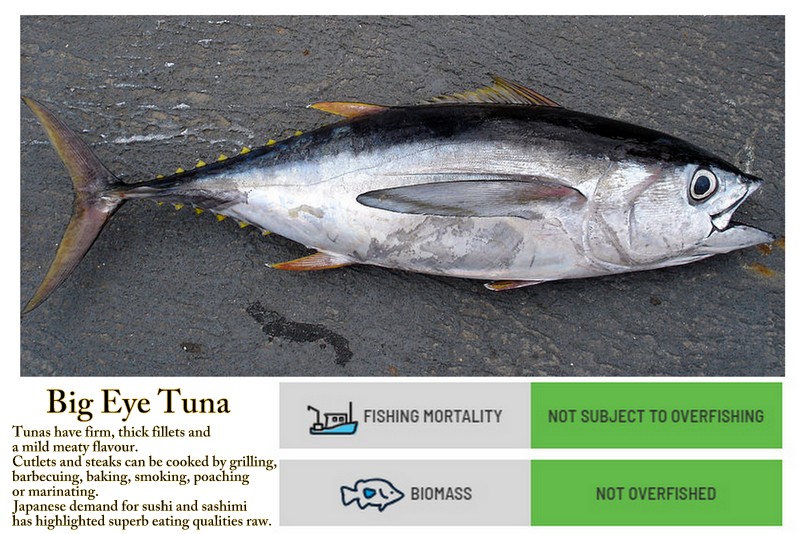
Judith is a vegetarian who also loves seafood, therefore, when upon the sea we are hunter gathers in an effort to widen our menu and maintain good health through diet. We only kill what we consume. This series of images shows how Judith preserves the meat of such a large creature, which is huge task, gruesome in the first stage of butchering the animal. Included is a photo of the animal’s stomach that was empty except for two half digested sea-horses, which we found rather odd.



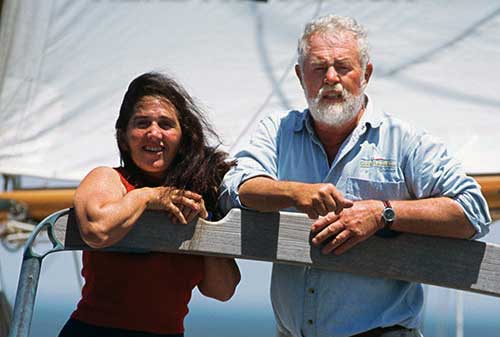

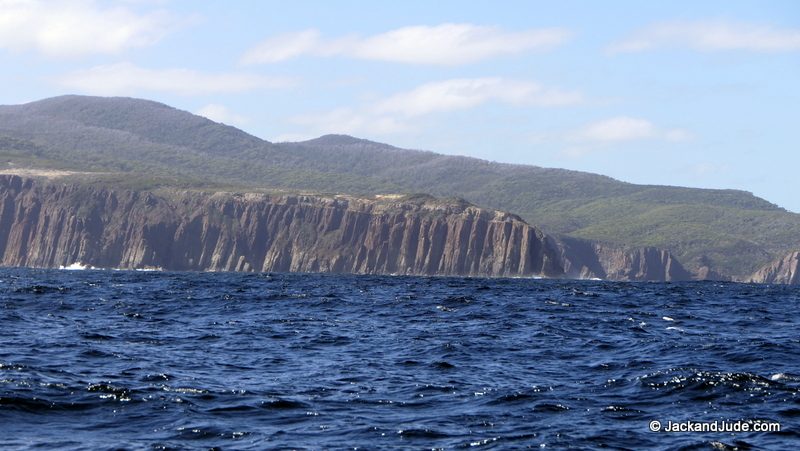
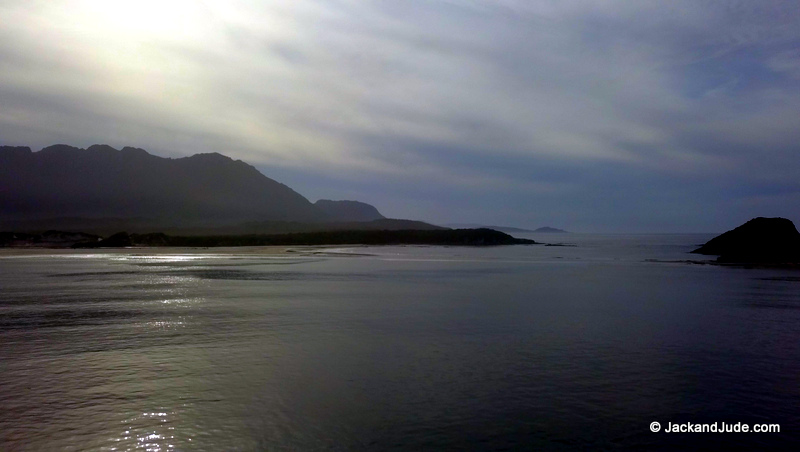

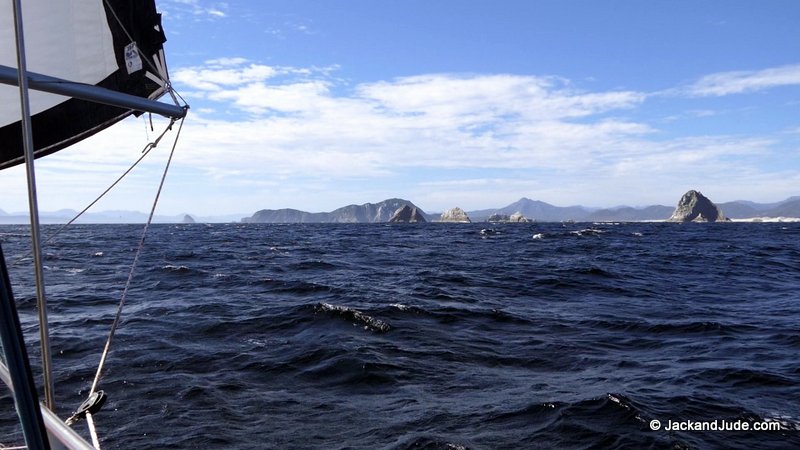
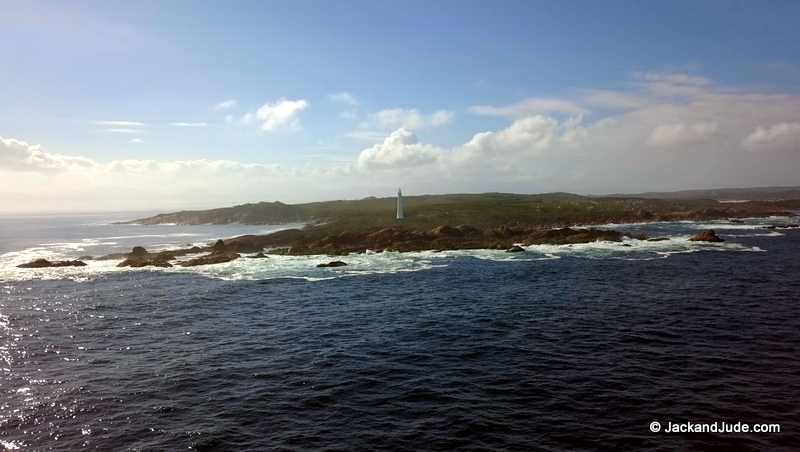



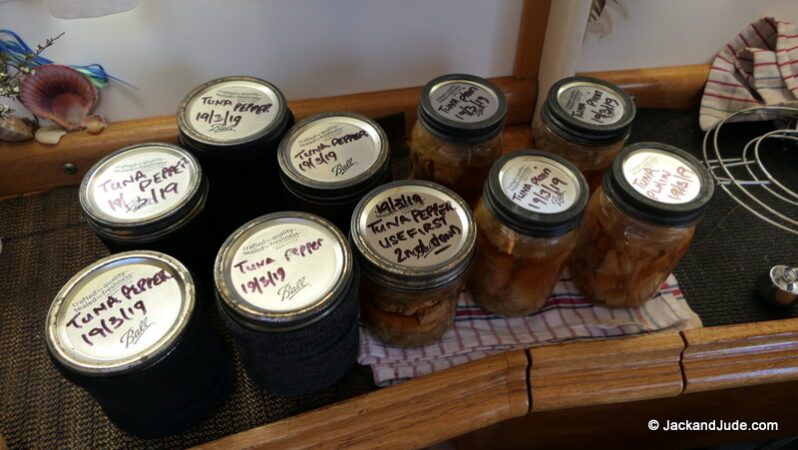




Hi Jack and Judy
Cynthia and I on Horizon have been cruising the SW wilderness and have now returned up the east coast currently in Dover looking for somewhere up the Huon to moor/ anchor or tie up to get a diesel
Mechanic to check out a minor fuel issue.
We were thinking of heading to Port Huon for a short stay but would appreciate any input from you. We joined your website whilst still in SA but can’t seem to find our conversation emails with you. Look forward to reconnecting as we are finding Tasmania a cruising Mecca.
Regards
Michael and Cynthia Lohmeyer
Hello Jack and Jude
We seemed to have hit the jackpot by coming into the Port Huon marina. We have found a company Flux Engineering who have been fantastic. Very knowledgeable, professional and reasonably priced – fixed our fuel issue in a wink then went on to repair a leak in the tail shaft. We are on the hard antifouling and minor maintenance while waiting for parts. The marina manager Tom has been great – v accommodating so we are going to stay here in a berth for several months and plan to fly back to SA next Wed to collect our car and drive back to give us some flexibility. Hope we can catch up on our return.
Cheers
Michael and Cynthia
That’s great to hear. A nice location.
What sort of costs are involved in the haul-out and per day on hard stand for size of vessel?
J&J
New to all of this .
Only just spent 30 min reading and like what I read.
Dun some sailing in the past .
Bringing a yaught from bundigber to albany wa . Can you help me with some advise.
Ta james
Yesterday, we finally emerged from the south coast’s black hole of communications and found your letter posted as a reply to a post on Caitlin and Michael ~ “Bass Voyager. Not a worry, we’ll fix that up.
It’s getting a bit late in the season to head west, unless you go around the north after cyclone season ends in late April. The lows down under Aus are getting bigger and the easterly winds common close to the coast in summer are waning.
If we can help with more info we’ll need to know how big a boat, crew on board, experience and when you’re thinking of setting off. Cheers
Thanks for the reply.
Heading from Bundaberg in June over the top down the west coast to Albany on the south west coast . Wondering about the sailing conditions at this time of the year and how long it possibly will take. The yaught is 45 foot ketch rigged. I have sailed from India to Perth but that was a lot of years ago.
Four of us on board so should be able to spread out the night watches All the best to you both. Jim
Good voyage that one.
Plenty of easterly winds, especially TI to Darwin. Take great care in the Kimberley, turbid waters caused by huge tidal movements present challenges, so plan your movements with tides in mind. Keep moving, you’ll want to be in Carnarvon/Monkey Mia by mid-October or you take the chance of being hammered by southerly winds north of there to Cape Leveque with long distances between bolt holes.
From Monkey Mia, you can wait till a fair wind takes you to Geraldton and then you’re into more variable winds.
We’ve done this trip a few times. the strong constant south winds are generated by heat rising up in the NW sucking in the cooler air.
Hope that helps